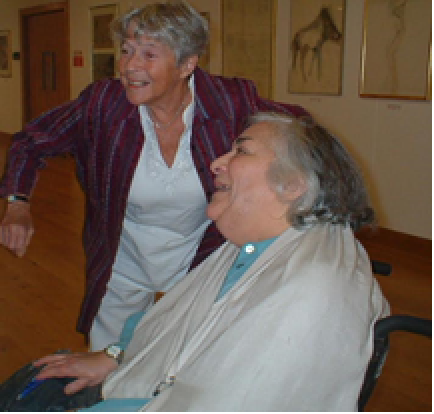Featured Sculptor
HAPPY BIRTHDAY TO A GOOD FRIEND OF THE GIBBERD GARDEN
Sculptor Gerda Rubinstein
HAPPY BIRTHDAY TO A GOOD FRIEND OF THE GIBBERD GARDEN
Sculptor Gerda Rubinstein




See the Harlow Art Trust website for details. Or pick up a free leaflet published by the Art Trust to see the locations of Gerda Rubinstein’s work.
Contact Harlow’s Parndon Mill gallery for information about the availability of pieces for sale.
-has enjoyed a long and successful international career, and Harlow has benefited by the acquisition of several beautiful pieces, large and small. Her work can be seen around Harlow as well as in the Gibberd Garden, and her contribution to the arts in Harlow has been recognised by a Heart4Harlow award.
This summer, Gerda celebrates her 90th birthday, and the Trustees and Friends of the Gibberd Garden send their good wishes and appreciation for the interest Gerda has shown in safeguarding the future of the garden, and for her kindness and generosity.
Born in 1931 in Berlin, Gerda moved with her family several times in her early years. Her Jewish father was in danger from the Nazi regime in Germany, and, when the family were living in Holland, he was arrested and sent to the concentration camp in which he died. Gerda moved to the UK in 1959, and in the late 1960s met Pat Fox- Edwards — later to become Sir Frederick’s second wife.
Gerda and her husband Christopher became good friends of the Gibberds. In 2006, Lady Gibberd hosted the launch of an exhibition of Gerda’s work at the Gibberd Gallery at Harlow Civic Centre.
After Lady Gibberd’s death, Gerda created a heartfelt tribute to her friend by presenting the Trust with a small tableau which shows Pat Gibberd in her wheelchair, with a group of children.
At the Gibberd Garden, visitors can see wonderful examples of the variety of styles, materials and techniques Gerda employed.
The striking heads of Frederick Gibberd commissioned by Lady Gibberd, one a bronze cast and the other a concrete cast, illustrate how well Gerda knew Gibberd. Another intensely personal piece is the tondo — a name for a circular work of art, either a painting or a sculpture — showing Frederick Gibberd at his desk while Patricia Gibberd weeds the garden. It is attached to a two-storey gazebo, and easily missed, but well worth a closer look.
The two formidable eagles perched above one of the entrance gates were commissioned by Sir Frederick Gibberd. At the time he commented to his younger daughter that he wanted fierce creatures to scare off unwanted visitors; at other times he suggested they might frighten off the rabbits which were proving a nuisance in his developing garden. Gerda was allowed to enter the cage of Goldie the eagle at London Zoo so she could study and understand the form and attitude of an eagle
In recent years, the eagles, which are made from ciment fondu, have needed repair with the work carried out under Gerda’s direction at a specialist studio.
Mother and Son stands on the lawn above the House. It is a charming study of the joy the young woman and her baby share as they gaze at each other. The sculpture began its public life in Lewisham. Gerda told the Gibberds that two Irishmen had fallen in love with it one night, and tried — unsuccessfully — to make off with it. A passing policeman thwarted their “romantic” plan, but not before they had caused damage. Once repaired, the sculpture was sent to the more tranquil environment of the garden.
For more information about Gerda and her work please visit her website through this link:
Mag Barrett
IN HER OWN WORDS – The passage below was written by Gerda to explain how she works:
The sculptures that I make have developed from early carving in stone and then refractory brick, in which I carved negative shapes into which bronze was poured, to modelling in wax for small work or in clay for larger pieces, which are then cast in bronze or occasionally in cement or resin.
My sculptures are almost always of people, often celebrating something, because I get my inspiration from where I live. I have also made portraits and modelled birds, including owls, flamingoes and hawks, cats, dogs, donkeys, goats and other animals when the opportunity has arisen.
I enjoy working on a commission and hope that the work, which is generally figurative, will be self-explanatory without the need for a title. I have come to realise that the sense of freedom and hope that I experienced as a teenager in Holland after five years of occupation in World War II has really never left me and that it still colours my work.
